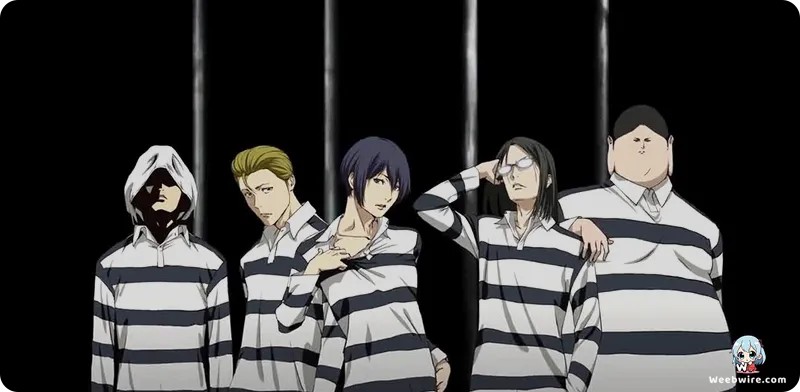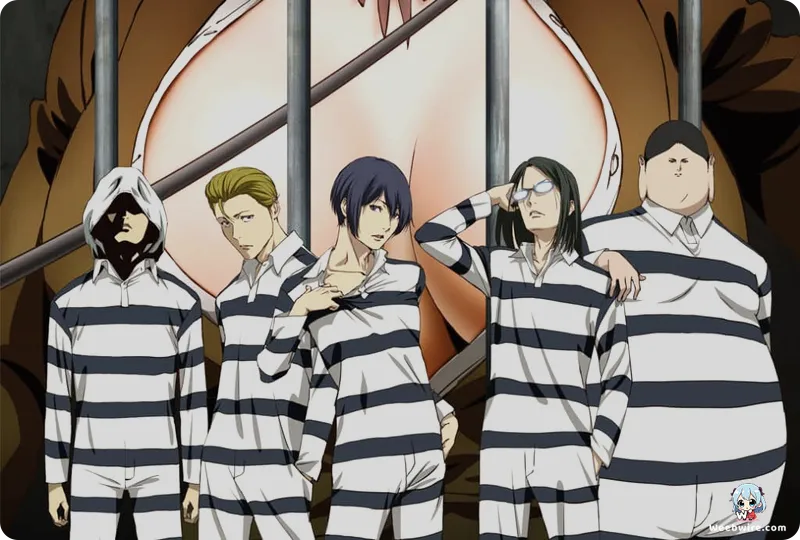'Prison School: Mad Wax' OVA: Diving into the Hilarious Depths of Anime's Most Audacious Comedy

In the expansive world of anime, some series boldly forge their own path, defying easy classification through sheer creative audacity. Prison School stands as an undeniable giant within the ecchi comedy genre. It is celebrated not just for its provocative premise but for its unwavering commitment to an outrageous and unforgettable vision. While the main television series captivated audiences with its no-holds-barred humor and peculiar setup, the standout Original Video Animation (OVA), Prison School: Mad Wax, serves as the definitive essence of everything that propelled this series into cult classic status. This arc plunges viewers deep into a vortex of absurdity, offering an unparalleled perspective from which to appreciate the comedic brilliance and meticulous craftsmanship underpinning this iconic anime.
The fundamental premise of Prison School is deceptively simple: five male students, now the only boys in the formerly all-girls Hachimitsu Academy, find themselves swiftly condemned to an on-campus 'prison.' Their crime? A rather unfortunate peeping incident, leading to their swift and severe incarceration by the formidable Underground Student Council (USC). What follows is a relentless onslaught of comedic torment, intricate psychological battles, and increasingly surreal predicaments. The Mad Wax OVA specifically thrusts our beleaguered protagonists into a new, bizarre challenge. They must navigate the capricious whims of the eccentric Chairman, a man whose profound obsession with wax figures dictates their immediate future. Their latest, humiliating task involves a desperate attempt to craft a flawless wax sculpture of the Chairman's beloved horse, all while enduring the constant, ominous threats from the ever-present USC. This particular escapade brilliantly showcases the series' signature blend of high-stakes absurdity and uproarious humiliation.
The Unmistakable Artistry of Prison School
A cornerstone of Prison School's unique appeal is the unyielding artistic vision and impeccable comedic timing originated by manga creator Akira Hiramoto. His distinctive art style is immediately recognizable, characterized by an extraordinary level of detail, particularly in the rendering of facial expressions. Characters frequently contort into grotesquely exaggerated visages of terror, unbridled lust, or profound despair, each perfectly calibrated to amplify the comedic impact of every scene. These are not mere caricatures; they are meticulously drawn, often bordering on photorealism, which ironically heightens the hilarity of the outlandish situations.

J.C.STAFF's masterful anime adaptation flawlessly translates this singular visual language, ensuring that the manga's iconic visual gags are not only preserved but enhanced. Hiramoto's exceptional work on Kangoku Gakuen (the original Japanese title) earned critical acclaim, including the prestigious 37th Kodansha Manga Award in the General category in 2013. This award stands as a testament to the sophisticated writing and art that underpins its often explicit content. J.C.STAFF's animation breathes dynamic life into Hiramoto's static panels, elevating both the slapstick and the inherent dramatic tension. While the studio boasts a diverse production history, Prison School remains one of its most audacious and memorable achievements. Their adeptness at maintaining a delicate equilibrium between genuine suspense, will the boys ever achieve freedom, and riotous comedy is a masterclass in adaptation. The pacing is deliberately crafted; comedic build-ups are often protracted, meticulously drawing out discomfort and anticipation, only to unleash an explosive visual or verbal punchline. This precise attention to comedic rhythm is what elevates Prison School far beyond typical ecchi fare, cementing its place as a truly original comedic landmark.
The Voices Behind the Hilarity
The exceptional voice acting ensemble is undeniably integral to the series' enduring charm and comedic power. The Japanese cast delivers legendary performances, perfectly embodying the exaggerated personalities and internal monologues with unparalleled precision. Hiroshi Kamiya, renowned for his iconic roles such as Levi Ackerman and Izaya Orihara, lends his voice to Kiyoshi Fujino, the reluctant protagonist, imbuing him with a compelling blend of exasperation and steely determination. Daisuke Namikawa's portrayal of Gakuto, the erudite strategist, is marked by a verbose, almost theatrical flair, often culminating in spectacularly comedic fits of despair. The formidable female cast, featuring Sayaka Ohara as the stern Mari Kurihara and Shizuka Itō as the sadistic Meiko Shiraki, infuse their characters with an intimidating gravitas that amplifies the boys' increasingly dire predicaments. Rie Kawamura's standout performance as Hana Midorikawa, with her volatile temper and bizarre fixation on Kiyoshi, contributes some of the series’ most unhinged and unforgettable moments. These stellar vocal performances are not merely supplementary; they are the pulsating heart of the show's comedic engine, transforming already amusing scenes into truly iconic ones.
Beyond its surface-level ecchi and comedic elements, Prison School astutely delves into themes of enduring friendship, relentless perseverance, and the absurd lengths individuals will go to in pursuit of freedom and a semblance of dignity, however compromised. Despite their initial questionable intentions, the boys forge a profound camaraderie born from shared suffering. Their elaborate schemes to outmaneuver the USC often necessitate intricate planning and seamless teamwork, revealing a surprising depth beneath the overtly lewd humor. The series also masterfully satirizes power dynamics and institutional authority, utilizing Hachimitsu Academy and the USC as a biting microcosm of broader societal structures. The Mad Wax arc, with its central focus on placating the Chairman's peculiar artistic sensibilities, further sharpens this satirical edge, brilliantly illustrating the arbitrary nature of power and the ridiculous gauntlet one must navigate to survive within such oppressive systems.
In essence, Prison School: Mad Wax stands as a powerful testament to unbridled creative freedom and an unapologetic embrace of its unique identity. It is a series that fearlessly pushes boundaries, meticulously blending intricate artwork, brilliant voice acting, and an utterly outlandish premise into a cohesive, uproariously funny, and deeply memorable experience. For aficionados of bold, visually distinctive comedy that dares to explore the truly bizarre, the Mad Wax OVA, and indeed the entire Prison School saga, offers a singular and unforgettable journey into the very heart of anime's most audacious humor. It remains a compelling example of how a series can achieve both critical recognition and a fervent fanbase by simply remaining true to its eccentric self, no matter how outlandish that self may appear.
Credits
Prison School
Author
Akira Hiramoto
Cover Art
Akira Hiramoto
Studio
J.C.STAFF
Publisher
Kodansha
Producers





